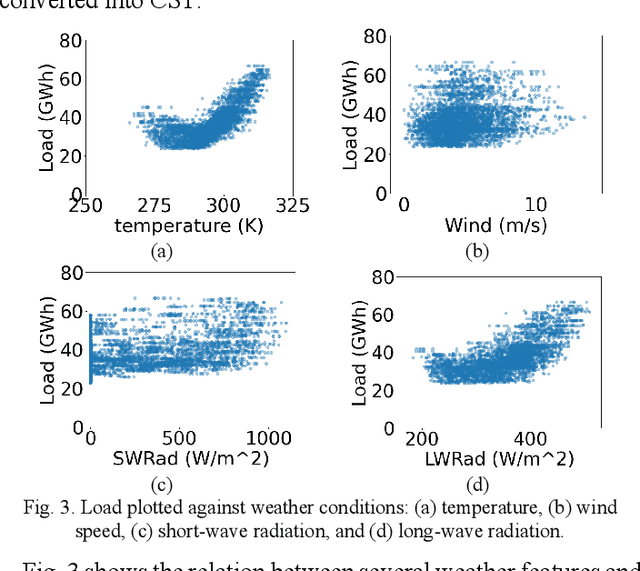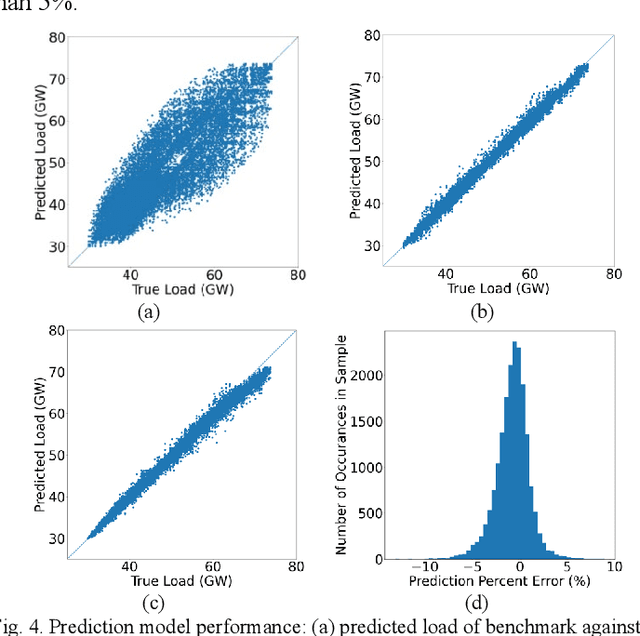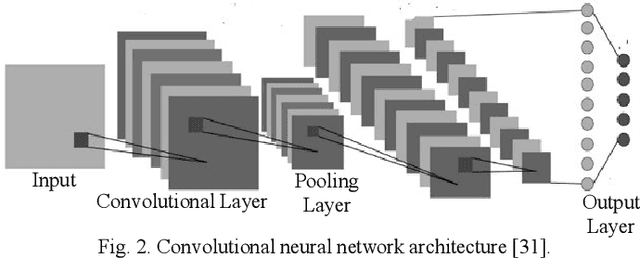Mingjian Tuo
Analysis of Weather and Time Features in Machine Learning-aided ERCOT Load Forecasting
Oct 13, 2023



Abstract:Accurate load forecasting is critical for efficient and reliable operations of the electric power system. A large part of electricity consumption is affected by weather conditions, making weather information an important determinant of electricity usage. Personal appliances and industry equipment also contribute significantly to electricity demand with temporal patterns, making time a useful factor to consider in load forecasting. This work develops several machine learning (ML) models that take various time and weather information as part of the input features to predict the short-term system-wide total load. Ablation studies were also performed to investigate and compare the impacts of different weather factors on the prediction accuracy. Actual load and historical weather data for the same region were processed and then used to train the ML models. It is interesting to observe that using all available features, each of which may be correlated to the load, is unlikely to achieve the best forecasting performance; features with redundancy may even decrease the inference capabilities of ML models. This indicates the importance of feature selection for ML models. Overall, case studies demonstrated the effectiveness of ML models trained with different weather and time input features for ERCOT load forecasting.
Graph Neural Network-based Power Flow Model
Jul 05, 2023



Abstract:Power flow analysis plays a crucial role in examining the electricity flow within a power system network. By performing power flow calculations, the system's steady-state variables, including voltage magnitude, phase angle at each bus, active/reactive power flow across branches, can be determined. While the widely used DC power flow model offers speed and robustness, it may yield inaccurate line flow results for certain transmission lines. This issue becomes more critical when dealing with renewable energy sources such as wind farms, which are often located far from the main grid. Obtaining precise line flow results for these critical lines is vital for next operations. To address these challenges, data-driven approaches leverage historical grid profiles. In this paper, a graph neural network (GNN) model is trained using historical power system data to predict power flow outcomes. The GNN model enables rapid estimation of line flows. A comprehensive performance analysis is conducted, comparing the proposed GNN-based power flow model with the traditional DC power flow model, as well as deep neural network (DNN) and convolutional neural network (CNN). The results on test systems demonstrate that the proposed GNN-based power flow model provides more accurate solutions with high efficiency comparing to benchmark models.
Wholesale Electricity Price Forecasting using Integrated Long-term Recurrent Convolutional Network Model
Dec 23, 2021



Abstract:Electricity price is a key factor affecting the decision-making for all market participants. Accurate forecasting of electricity prices is very important and is also very challenging since electricity price is highly volatile due to various factors. This paper proposes an integrated long-term recurrent convolutional network (ILRCN) model to predict electricity prices considering the majority contributing attributes to the market price as input. The proposed ILRCN model combines the functionalities of convolutional neural network and long short-term memory (LSTM) algorithm along with the proposed novel conditional error correction term. The combined ILRCN model can identify the linear and non-linear behavior within the input data. We have used ERCOT wholesale market price data along with load profile, temperature, and other factors for the Houston region to illustrate the proposed model. The performance of the proposed ILRCN electricity price forecasting model is verified using performance/evaluation metrics like mean absolute error and accuracy. Case studies reveal that the proposed ILRCN model is accurate and efficient in electricity price forecasting as compared to the support vector machine (SVM) model, fully-connected neural network model, LSTM model and the LRCN model without the conditional error correction stage.
 Add to Chrome
Add to Chrome Add to Firefox
Add to Firefox Add to Edge
Add to Edge